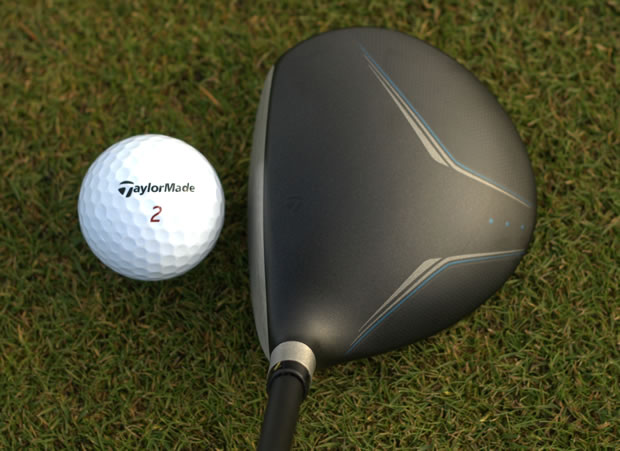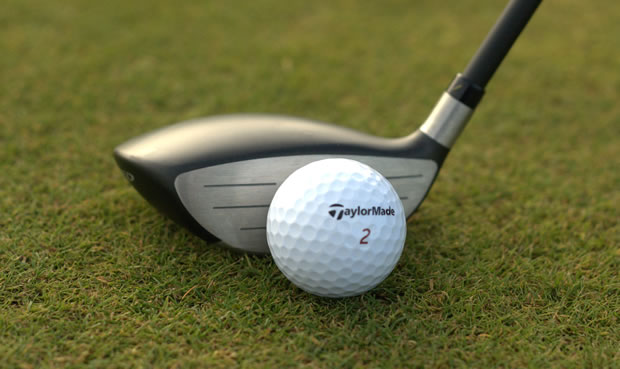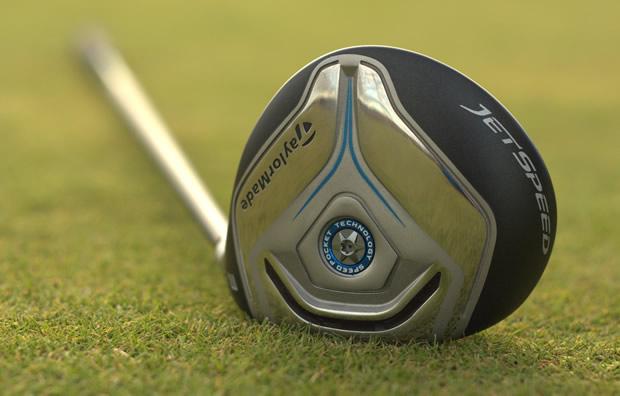The TaylorMade JetSpeed fairway is the successor to the TaylorMade RBZ Stage 2 fairway and features a curved Speed Pocket slot on the sole of the club like the TaylorMade SLDR fairway.
The Speed Pocket has been the key to these super distance fairway woods because it enables the face to flex more and generate higher ball speeds from a smaller head. In the JetSpeed the slot is actually smaller than before but it is also longer in length.

Unlike the RBZ Stage 2, it has been filled in with a polymer to keep it clear of debris and dampen down vibration for improved feel. Certainly the feel from the club was excellent and the sound was a lot more solid than previous models.
Compared to the white razamatazz that surrounded the RBZ fairways, the silver face and dark head seem a bit understated. The design in the matt black head is familiar too, looking very similar to the 2007 TaylorMade Burner fairway. I think the new styling will appeal to more golfers and the visual contrast between the face and top line is still there to help alignment.
When you have the club at address, the other thing you will notice is the head size. The 3-wood is 165cc which is 10cc larger than the SLDR but actually 10cc smaller than the RBZ Stage 2. Combined with the darker head colour, this makes it feel more compact generally and that is not a bad thing. It is probably just the right size for most category 1 and 2 players.

At address you will also notice there is no adjustable hosel and this combines with the changes in the Speed Pocket to save weight that TaylorMade have moved around the inside of the head to bring the Centre of Gravity (CG) lower and forward. This increases the launch angle, lowers spin and combined with the higher ball speeds from the Speed Pocket and the reworked JetSteel face should give you more distance.
To check this out when testing the JetSpeed driver against the SLDR on Flightscope I also put in the JetSpeed fairway wood in play and the results were very impressive. It was pretty close in performance to both, especially the low spin SLDR driver, because the lower spin and higher launch with more ball speed, even from a slower club head speed, were still giving a long carry. This fairway wood is a driver killer.
The JetSpeed fairway will fly higher than the SLDR, but for the majority of golfers who may struggle with their driver then this could be a great alternative. The SLDR needs a lot of clubhead speed to make up for the low spin, so that is why the JetSpeed is better.
The other advantage is the shallower face which means that it is more playable from the fairway. The larger headed RBZ had a higher CG so most of the benefits were gained from the tee. However the results I got were from hitting this off the deck, so the shallower profile is really delivering here both on the tee and on the ground.

The Matrix Velox T shaft is medium weight at around 69 grams in stiff and is 43.5 inches long, which the same as the RBZ Stage 2 but a good 0.5 inches longer than usual. This will also help with the clubhead speed, so some of the distance gain is attributable to that. However due to the fact it has more loft than a driver, it was more accurate in my tests, so there is a lot to like here.
There is a good choice of head lofts from 15° to 23° in 2° gaps so there is no need for adjustability and the overall appearance and performance of the club benefits from this.
Overall I think the JetSpeed fairway is a worthy successor to the RBZ Stage 2, even though it is actually a different approach due to the forward rather than back CG. The peformance was very good and the feel, flight and looks are everything most golfers could want from a fairway. My only concern is whether the low/forward CG approach is a short term fad, but it is hard to justify that when the numbers are so good.

What is more of a concern is gap fitting this into your bag. If the 3-wood is right up behind your driver distance then maybe the 3HL at 17° would be better for more people combined with a rescue or higher lofted second fairway. It's a nice problem to have and it will depend on whether this is a driving club or a par-5 approach club for you.
It's a nice problem to have when you are hitting your fairways too far!